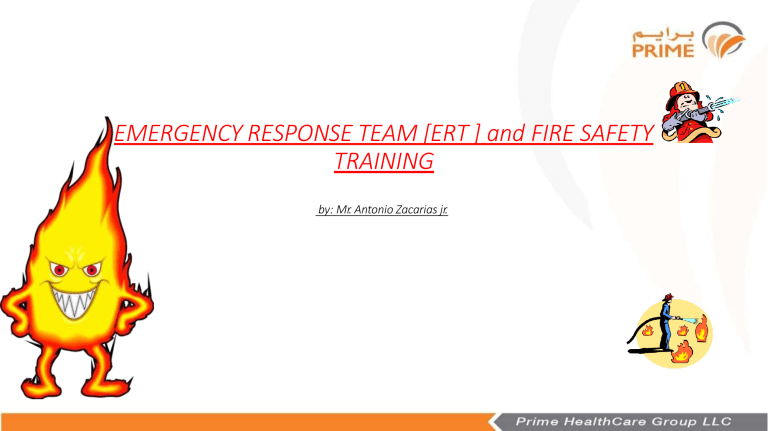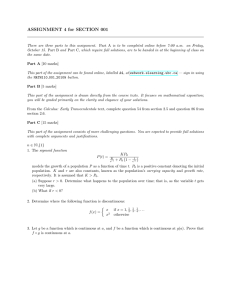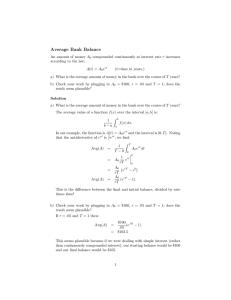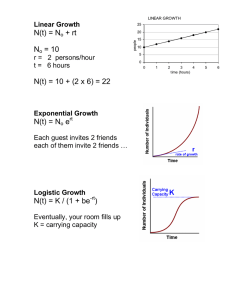
EMERGENCY RESPONSE TEAM [ERT ] and FIRE SAFETY TRAINING by: Mr. Antonio Zacarias jr. Objectives After this presentation you will know: • • • • • • What is ERT? ERT Members Roles & Responsibilities of ERT members. Fire Introduction. Fire Triangle What are the Types / classes of Fire • • • • • • • • What to do in case of a fire? Evacuation guideline. Emergency Exit. Fire fighting & detecting Equipment's in Prime Hospitals Types of Extinguishers in Prime hospital & their usage. Safe rooms Location of the Assembly Point Mock drill INTRODUCTION WHAT IS ERT (EMERGENCY RESPONSE TEAM) ? It is a nominated team identified from the staff who have been specially trained to provide immediate response during any (code Red or Code Orange) emergency situation as per the defined protocol. ERT MEMBERS The team comprises of ; 1. Floor in charges / Area in charges 2. Nursing Supervisor 3. Fire marshal 4. Call Center Officer 5. Security Officer 6. Mechanical, Electrical and Plumbing Team (MEP) 7. Clinical Engineering Team 8. QHSE officer 9. FMS Manager Floor In –charge/Area in charge Know your area, the people in it, and at least two safe exits. Guide / direct the patient, relatives, visitors and the staff to evacuate their respective floor smoothly when code Orange is announced. Nursing Supervisor Assess and liaise with the involved department floor in charge/Area In charge. Communicate with the head of the Hospital, Health and safety Coordinator, FMS manager and floor in charge/Area Incharge in other floor update them about the situation. Fire Marshal Is a trained fire fighter. Last person to leave the floor. Lead occupants to the corridor and wait for the announcement/instruction. Call Center officer Can announce code Red if they receive instruction from any ERT member, They also contact Fire Marshal / Bio Medical Engineer / QHSE Officer /Risk Manager / Civil Defense as and when required. Clinical Engineering Team Provide Medical equipment if contacted by ERT members. MEP Team Responsible to isolate the medical gas service / provide gas cylinders when contacted by Safe Room In charge or any Floor In charge. Security Officer Security staff on duty (within the building) to coordinate with other ERT members and provide necessary support as well as isolate/evacuate / restrict entry to the building. Security staff on duty (Out side the building) to coordinate with other ERT members and stop the entry of vehicle / patient / visitor to the hospital premises and also coordinate with the Police / Civil Defense. QHSE Officer Provide fire training to staff, conduct periodic evacuation drill, supports ERT members when there is any an Emergency (Internal disaster). Initiate oversee the investigation and for the reason also coordinate with Civil defense / Police FMS Manager FMS Manager will investigate the reason & severity of the incident in coordination with the QHSE Officer / Engineering Department . HSE Officer and Risk Manager shall share their responsibilities when either of the one is on leave. FIRE INTRODUCTION ABOUT FIRE • What is Fire? – Fire is basically a chemical reaction combining three elements: Fuel, Heat and Oxygen. The Fire Triangle Proportional Ratio E.g. 1 The Fire on the candle goes off when it is covered by something…….. Why ? Because the Oxygen is not there. it means if one of the element from the fire triangle is removed, the fire goes off. TYPES OF FIRE • Class A – Normal Combustibles • Class B – Flammable Liquids • Class C – Electrical Circuits, switchboards, office equipment • Class D – Combustible Metals such as sodium, potassium and magnesium • Class E –Class F / k – Cooking fats and oils Classification / Types of Fire Extinguished using Water, DCP • • • • • Extinguished using • • • • • • wood cloth paper rubber many plastics DCP & CO2 gasoline oil grease tar oil-based paint Lacquer ( varnish ) DRY POWDER CLASS K FIRES • Recently recognized by NFPA 10. • Fires involving combustible vegetable or animal non-saturated cooking fats in commercial cooking equipment. Extinguished using Fire Blanket & CO2 COMMON REASONS FOR ELECTRICAL FIRE OverloadedPlugpoint OverloadedAdaptors Unorganizedcabling Short circuit Exposedlive wire Pest Intervention ExtensionBoardabuse EARLY DETECTION & FIRE CONTROL Fire Detection & Alarm System which includes - Detectors smoke, heat & Gas - Manual Call Point (Break Glass / Press Here) - Fire alarm Bell - Fire Alarm Zone/Master Panels 20 Fire Suppression system which includes - Fire Extinguishers - Fire Blanket - Fire Hose reel - Sprinkler System - Fire Hydrant (Dry Riser) Fire Extinguisher Anatomy DISCHARGE LEVER DISCHARGE LOCKING PIN AND SEAL PRESSURE GAUGE (for the permanent pressure fire extinguishers) CARRYING HANDLE DISCHARGE HOSE DATA PLATE DISCHARGE NOZZLE DISCHARGE ORIFICE BODY TYPES OF EXTINGUISHERS Foam Extinguisher • suitable for class B Fires & Kitchen fires Dry Powder Extinguisher (Universal extinguisher) Carbon Dioxide Extinguisher (Electrical Fire) Duration of extinguisher: 20 -30 sec “FIRE PREVENTION” IS BETTER THAN “F2I8 RE -FIGHTING” Fighting the Fire P Pull the pin A Aim low at the base of flames S Squeeze the handle S Sweep side to side WHAT TO DO IN CASE OF A FIRE • RACE: R – Rescue A – Alarm C – Confine the fire E – Extinguish (if trained) and evacuate 30 WHAT TO DO IN CASE OF A FIRE On discovering or suspecting a fire Rescue -yourself & the nearby patient Alarm- locate the break glass to initiate fire alarm; or shout “FIRE, FIRE, FIRE “loudly at the top of your voice Large Fire -Get to the nearest telephone line, announce CODE RED and specify the location of the fire Confine the fire- shut doors, remove flammable material away on exiting –if possible –ie waster paper bins Extinguish/Evacuate-Use the right extinguisher to put out the fire –only use if trained. Find nearer safe exit from the building & leave if advised. WHAT TO DO IN CASE OF A FIRE • Break the Glass Raise the Alarm . Emergency Telephone Numbers Code Red : 7666 Or Emergency Services namely Police – 999 Ambulance – 998 Civil defense – 997 Dubai Electricity and Water Authority (DEWA) – 991 Provide Information Your name Location Type of Fire Size of Fire Who else is there with you? ERT team on hearing announcement Code red/Code orange will take charge of the situation to evacuate the area / floor . The people evacuated from each floor should assemble at the nearest Fire Assembly point to follow the instructions. Once evacuated the building , the reentering will be subject to the clearance by ERT- QHSE officer / FMS Manager / Govt authority . Before evacuating a room or block, close the windows and door behind you Emergency Exits: •There are 26 emergency exits doors Here in PH from rooftop to Basement 2 and 8 exit doors identified to exit from the building in case of emergency. •There are floor plan & exit directional signage's provided in all floors to reach the final exit in the ground floor leading to the Assembly points EMERGENCY EVACUATION GUIDELINES • Code ORANGE is the Emergency Evacuation Code • ERT Team take charge of the situation upon Code ORANGE • Follow the RACE procedure. • Evacuate the premises through the nearest emergency exit to the assigned assembly points. • Never use Elevator to escape. • Do not panic, Stay calm, Give clear & exact direction. • Don’t run during evacuation time. • Assemble at the assembly points till head count is completed and final clearance is given to re-enter in to the building. 38 ASSEMBLY POINT s - Infront of the hospital, near to valet parking area 39 MOCK EVACUATION DRILL • The ERT conducts Evacuation Drill regularly. Please attend these Fire Drills. • The use of Fire Extinguisher is demonstrated to all staff at the assembly point as part of the Fire safety training /Drill. Central Medical G a s Supply – Area Alarm Panel Area Alarm Panel monitors various gas pressures (O2, N2O, Air 4 Bar,Air 7 Bar, Vacuum) of the area and gives an alarm if detected below or above set pressures AVSU – Area Valve Service Units Area Valve Service Units – These need to be closed in case of a major leakage or fire (after ensuring the availability of portable oxygen cylinders for patients)




